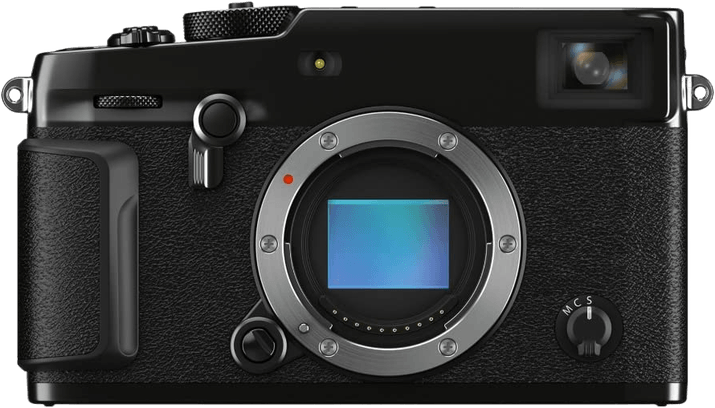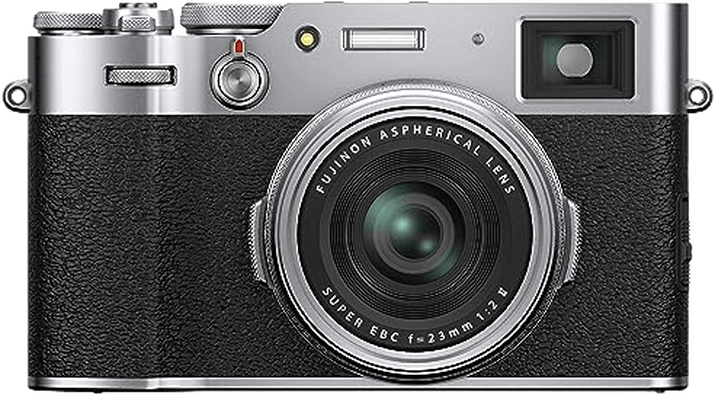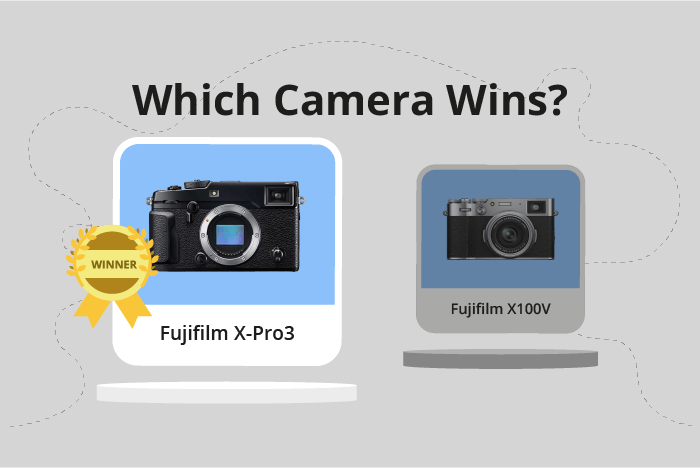Fujifilm X-Pro3 vs X100V Comparison
Fujifilm X-Pro3

Fujifilm X100V

The Fujifilm X-Pro3 emerges as the winner with a score of 72/100, while the Fujifilm X100V trails closely with a score of 69/100. Both cameras are mirrorless and were released one year apart, with the X-Pro3 in 2019 and the X100V in 2020.
The X-Pro3 and X100V share similarities in size and weight, making them compact and portable. However, the X-Pro3 has an edge with its slightly larger dimensions (141 x 83 x 46mm) and heavier weight (497g) compared to the X100V’s smaller size (128 x 75 x 53mm) and lighter weight (478g).
The X-Pro3’s higher score is justified by its superior performance and features, justifying its higher launch price of $1799 compared to the X100V’s $1399. On the other hand, the X100V still offers great value with its lower price point and competitive specs.
Taking these factors into account, the Fujifilm X-Pro3 stands out as the better camera, while the Fujifilm X100V remains a strong contender for those seeking a more budget-friendly option.
Fujifilm X-Pro3 vs X100V Overview and Optics
The Fujifilm X-Pro3 emerges as the winner in the optics comparison with a score of 67/100, slightly edging out the Fujifilm X100V, which scored 66/100. Both cameras share several common specifications, including 26 megapixels, 11 shooting speed, CMOS sensor type, X-Processor 4, and APS-C sensor size. Additionally, neither camera has image stabilization, and both lack a DXOMARK score as the company does not score Fujifilm cameras.
The X-Pro3 takes the lead with its interchangeable Fujifilm X lens mount, which allows the user to swap lenses and adapt to various shooting situations. This flexibility makes the X-Pro3 more versatile and suitable for photographers who require a range of lenses for different projects.
On the other hand, the X100V has a fixed lens mount, limiting its adaptability to different shooting conditions. However, this limitation can also be seen as a strength. The fixed lens mount simplifies the camera’s design, making it more compact and lightweight. This quality might appeal to photographers who prioritize portability and ease of use over versatility.
In comparing the optics of the Fujifilm X-Pro3 and X100V, the X-Pro3 comes out on top due to its interchangeable lens mount, offering greater flexibility for various photography needs. Meanwhile, the X100V’s fixed lens mount may be advantageous for those who value a more compact and user-friendly camera. Ultimately, the choice between these two cameras depends on the photographer’s priorities and preferred shooting situations.
Fujifilm X-Pro3 vs X100V Video Performance
The Fujifilm X-Pro3 and the Fujifilm X100V share an identical video score of 91/100, making them equally impressive in their video capabilities. Both cameras offer 4K video resolution and max video dimensions of 4096 x 2160. They also support a maximum video frame rate of 120fps and come with built-in time-lapse functionality.
Despite the equal score, the X-Pro3 shows its superiority in certain aspects. It offers more flexibility with interchangeable lenses, allowing users to adapt to various shooting situations and achieve different effects. This feature makes the X-Pro3 a more versatile choice for videographers who require a range of focal lengths and apertures.
On the other hand, the X100V has a fixed 23mm f/2 lens, which can be limiting for some users. However, this limitation can also be seen as a strength, as the fixed lens contributes to the camera’s compactness and portability. Photographers and videographers who value a smaller, lighter camera for travel or daily use may prefer the X100V for its convenience.
Taking these points into account, it is clear that both cameras excel in video performance, but the choice between them depends on the user’s priorities. The Fujifilm X-Pro3 is better suited for those seeking versatility and adaptability with interchangeable lenses, while the Fujifilm X100V is ideal for users who prioritize a compact and portable camera with a high-quality fixed lens.
Fujifilm X-Pro3 vs X100V Features and Benefits
The Fujifilm X-Pro3 and the Fujifilm X100V both score 85/100 in features, showing that these two cameras share many similarities. Both cameras have a 3-inch screen size and a screen resolution of 1,620,000 dots. They also both have touchscreens, flip screens, WIFI, and Bluetooth capabilities. Neither camera has GPS functionality.
The Fujifilm X-Pro3 stands out with its unique design and build, making it a favorite among street photographers and those who prefer a more retro feel. Its hybrid optical/electronic viewfinder allows for versatility and a more immersive shooting experience. The X-Pro3’s titanium body provides durability, ensuring the camera can withstand rough usage and various weather conditions.
On the other hand, the Fujifilm X100V excels in its compact design and fixed lens system. The 23mm f/2 lens is well-suited for everyday photography, making the X100V an ideal choice for those looking for a high-quality, portable camera. Additionally, the X100V has a leaf shutter, which allows for silent shooting and faster flash sync speeds.
Both cameras are excellent choices for photographers who value features such as touchscreens, flip screens, WIFI, and Bluetooth. The X-Pro3 is better suited for those who prioritize a more rugged, durable camera with a unique viewfinder experience, while the X100V is perfect for photographers seeking a compact, high-quality camera with a fixed lens system. Ultimately, the choice between these two cameras depends on the specific needs and preferences of the photographer.
Fujifilm X-Pro3 vs X100V Storage and Battery
The Fujifilm X-Pro3 emerges as the winner in storage and battery with a score of 71/100, while the Fujifilm X100V scores 37/100. Both cameras share some specifications: they use the same battery type (NP-W126S) and offer USB charging.
The X-Pro3 outperforms the X100V in storage, as it has two memory card slots and accepts SD, SDHC, and SDXC cards with UHS-II compatibility. This feature allows for faster data transfer and better performance. On the other hand, the X100V only has one memory card slot and is compatible with SD, SDHC, and SDXC cards but only with UHS-I compatibility.
However, the X100V has a slightly longer battery life, providing 420 shots per charge compared to the X-Pro3’s 400 shots. This difference may be beneficial for users who prioritize longer shooting sessions without frequent battery changes.
In terms of storage and battery, the Fujifilm X-Pro3 is the better choice due to its superior storage capabilities. The X100V, however, offers a slightly longer battery life, which can be advantageous for some users. Ultimately, the choice between these two cameras will depend on individual preferences and priorities.
Fujifilm X-Pro3 vs X100V – Our Verdict
Are you still undecided about which camera is right for you? Have a look at these popular comparisons that feature the Fujifilm X-Pro3 or the Fujifilm X100V:

